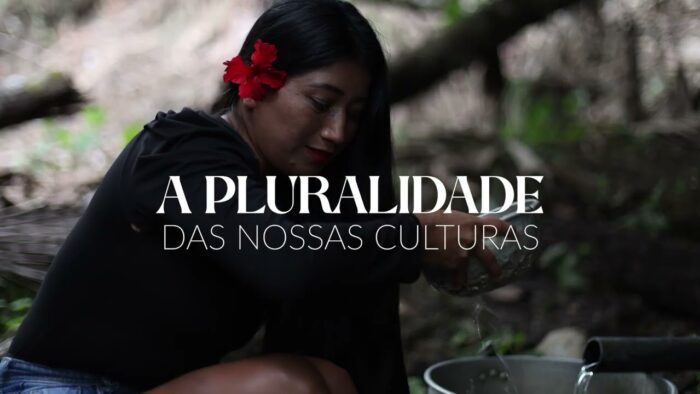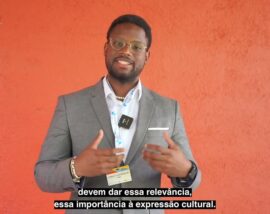Organization: UN Children’s Fund
Country: Brazil
Closing date: 27 Aug 2017
If you are a committed, creative professional and are passionate about making a lasting difference for children, the world’s leading children’s rights organization would like to hear from you.
For 70 years, UNICEF has been working on the ground in 190 countries and territories to promote children’s survival, protection and development. The world’s largest provider of vaccines for developing countries, UNICEF supports child health and nutrition, good water and sanitation, quality basic education for all boys and girls, and the protection of children from violence, exploitation, and AIDS. UNICEF is funded entirely by the voluntary contributions of individuals, businesses, foundations and governments.
Purpose of the Position
The incumbentis responsible for assist in planning, implementing, monitoring and evaluating advocacy and communication strategies to place children’s and women’s issues into the public domain, strengthen private sector support of UNICEF’s mission and objectives in the country, and enhance the organization’s credibility and brand.
Key Accountabilities and Duties & Tasks
Summary of key functions/accountabilities:
1.Media relations
Effective and timely professional assistance and support are provided in developing, drafting and maintaining contact information, materials and relationships with journalists and media outlets covering all media – print, TV, radio, web etc. – in the country, to communicate the story of UNICEF’s cooperation to a wider audience, especially middle class and young people.
– Maintain and update media relations contact list/database. Ensure rapid and accurate information dissemination to the media.
– Assist in developing and maintaining close collaboration with mass media, as well as with groups and organizations whose support is essential to the achievement of advocacy and communication objectives.
– Assist in drafting and editing articles, press releases, human interest stories and other advocacy/information materials in all media formats, as appropriate.
– Prepare background communication and promotional materials for briefing and visits of media and other special interest groups. Assist in the planning, logistic and administrative arrangements for them.
– Assist in collaborating with the media through activities such as organizing project site visits, facilitating photo coverage and TV footage and utilizing both web-based and traditional media as appropriate.
– Monitor and evaluate the use and effectiveness of media materials. Maintain a library of coverage (clippings, coverage etc.)
2.Private sector partnerships
Effective and timely professional assistance and support are provided in developing communication plans and actions for partnerships between UNICEF and private sector companies.
– Create, maintain and update communication plans/activities for private sector partnerships that optimize the relationships between UNICEF and such partners and leverage them to engage key audiences.
– Assist in developing and maintaining close collaboration with private sector partners around communication activities, in particular those with significant outreach capabilities.- Participate and contribute to the global PF4C Community of Practice.
– Monitor and evaluate the effectiveness of communication initiatives in the context of private sector partnerships.
3. Communication strategy
Ensure that the production of communication messages, products and materials is timely executed and followed up to support country communication strategy, regional and global campaigns, private sector partnerships and priorities and to support resource mobilization as set out in the work plan.
– Implement the tasks in the country communication work plan and strategy as assigned.
– Gather content and coverage of relevant country efforts to identify effective relevant country programme activities and results. Develop complementary, country specific and local communication materials and activities.
– Produce advocacy and communication materials (e.g. briefing notes, images, video. Web pages, social media content, etc.) that meet the country and global standards as set out in the Communication Toolkit.- Document experiences and analyses of public budgeting and investment for children at national and subnational levels.
– Assist in drafting and editing articles, press releases, human interest stories and other advocacy/information materials for both web-based and traditional media, as appropriate.
– Follow up on the production of advocacy and communication materials (e.g., films, videos, audio-visuals, etc.), and oversee the qualitative aspects of production, (e.g., quality control, translations, reviews of layout and graphic design etc.) to meet standards as set out in the Communication Toolkit.
– Establish or maintain an up-to-date documentation centre for communication materials including publications, press releases and clippings, photographs, audio-visual materials, web resources etc.
– Recommend appropriate information and communication materials for use in media, and other advocacy and communication activities; recommend the appropriateness, quality and dissemination of printed and audio-visual materials.
– Recommend established contacts, networks, resources and processes to support communication activities.
4. Celebrities, partners and special events
Ensure that the Country Office’s contact list of individuals, groups, organizations and fora (including Government, UN, and bilateral counterparts), are maintained and further developed, whose support is essential to/can assist in achieving the advocacy and communication objectives and who support and are able to actively participate in special events and activities that further the country programme goals.
– Help organize and generate public support for special events and activities to promote country programme goals.
– Assist in developing and maintaining close collaboration with mass media, as well as with groups and organizations whose support is essential to the achievement of advocacy and communication objectives.
– Maintain and update celebrity and partner contact lists/database for country office.
– Monitor/document process and effectiveness of working with these individuals/organizations.
– Prepare background communication and promotional materials for briefings and visits of media, Goodwill Ambassadors, donors, National Committee representatives and other special interest groups. The task includes preparing information materials (e.g., press releases, programme summaries, country fact sheets and media kits), and assisting in the planning, logistics and administrative arrangements.
5. Monitoring and evaluation
Regular monitoring and evaluation activities are undertaken according to the work plan to ensure maximum impact and continuous improvement of country communication efforts. Ensure results and reports are prepared and shared on a timely basis.
– Contribute to developing an advocacy and communication strategy by coordinating appropriate audience research and compiling and analysing relevant data.
– Monitor and evaluate the appropriate and timely dissemination of advocacy and communication materials to target audiences, and participate in the evaluation of their impact. Monitor and evaluate the use and effectiveness of media materials. Maintain a library of coverage (clippings, coverage etc.)
– Monitor the public perception of UNICEF in the country and recommend appropriate action to maintain a positive image for the organization.
– Assist in providing feedback to DOC on the use and appropriateness of global communication materials such as publications, images and multimedia products.
– Ensure good quality data collection, analysis and evaluation and reporting to ensure effective communication strategies, planning and effective and efficient advocacy.
– Undertake lessons learned review of successful and unsuccessful communication experiences as directed by supervisor.
Qualifications of Successful Candidate
Education
– University degree (Bachelor’s degree or equivalent) Communications, Journalism, Public Relations or a related field is required.
Experience
– Minimum of (2) two years of progressively responsible work experience in in communication, public relations, print and broadcast media, or interactive digital media.
– Experience working within and/or with the private sector.
– Experience working with partnerships across sectors.
– Background/familiarity with Emergency situations.
Language
– Fluency in Portuguese and English is required. Knowledge of an additional UN Language (Arabic, Chinese, Russian, and Spanish) is considered an asset.
Competencies of Successful Candidate
Core Values
Commitment
Diversity and Inclusion
Integrity
Core competencies
Communication [ II ]
Working with People [ I ]
Drive for Results [ I ]
Functional Competencies
Formulating Strategies and Concepts [ I ]
Persuading and Influencing [ I ]
Learning and Researching [ II ]
Relating and Networking [ I ]
Applying Technical Expertise [ I ]
Planning and Organizing [ II ]
To view our competency framework, please click here.
In relation, please note that all candidates who wish to apply to this Vacancy Announcement are requested to prepare and submit their respected UNICEF applications in English language. *Only shortlisted candidates will be notified.
UNICEF is committed to diversity and inclusion within its workforce and encourages qualified female and male candidates from all religious and ethnic backgrounds, representing the diversity of Brazil, such as black and indigenous people, to apply to become a part of our organization. Candidates will be treated equally regardless of gender, sexual orientation, special needs, social and HIV/aids status. UNICEF is a smoke-free environment.
How to apply:
UNICEF is committed to diversity and inclusion within its workforce, and encourages qualified female and male candidates from all national, religious and ethnic backgrounds, including persons living with disabilities, to apply to become a part of our organization. To apply, click on the following link http://www.unicef.org/about/employ/?job=506547


